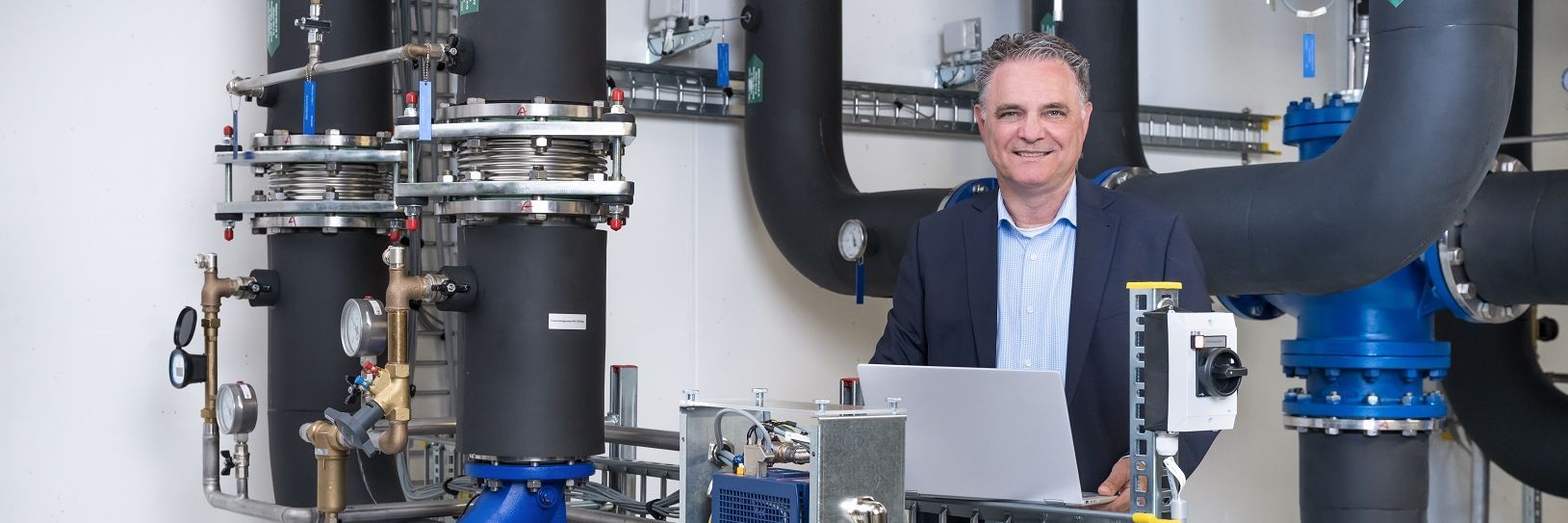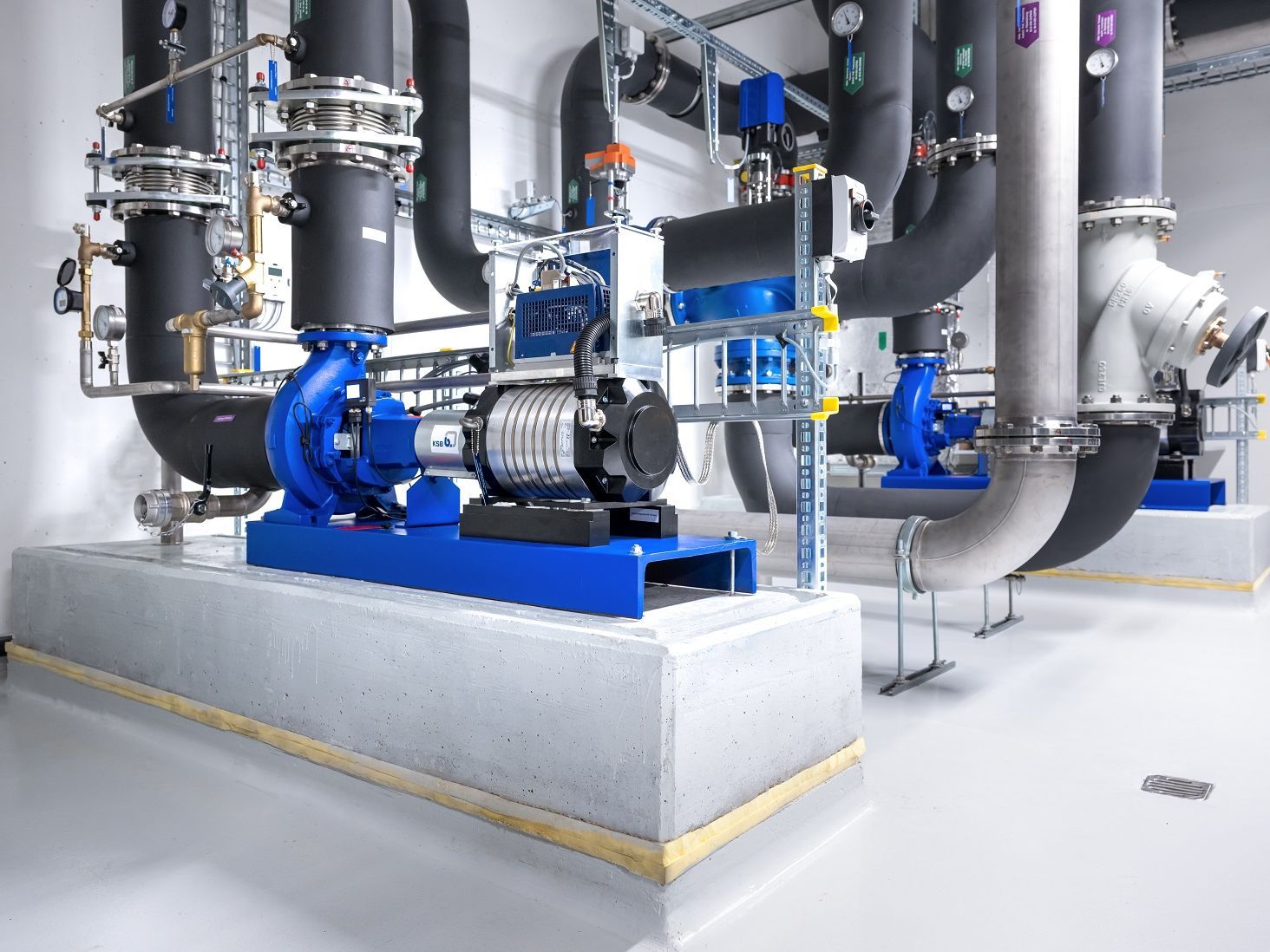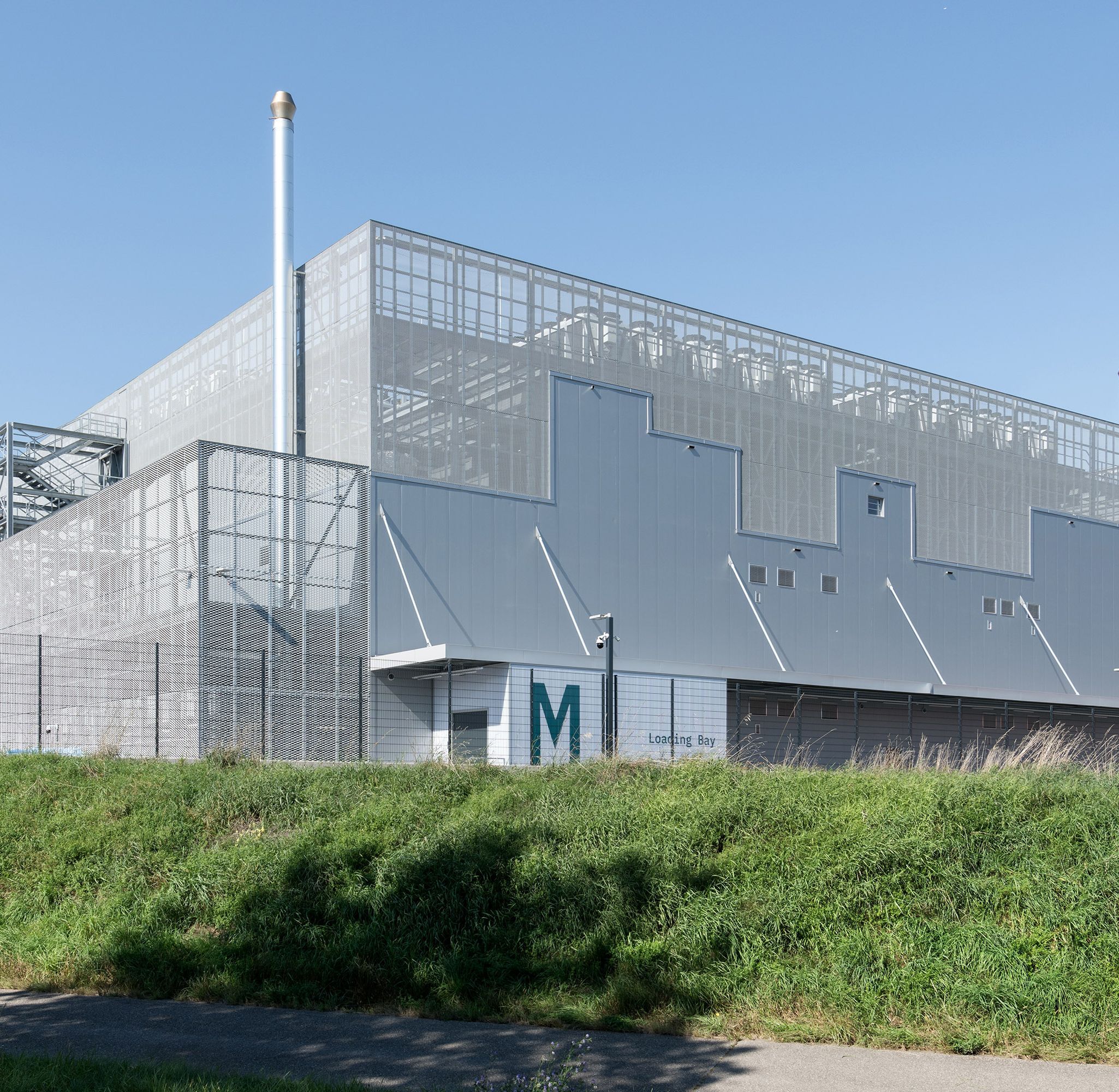
No detail left to chance
When Andrea Luigi Campomilla talks about technology, you quickly discover that: He doesn’t just zone in on machines, numbers, and systems – but it’s his attitude, curiosity, and demand for precision that stand out. He is driven by a desire to figure out how we can live and work in a way that is gentle on resources in an increasingly digitalized world. So much so that he questions the status quo and is constantly looking for more efficient solutions.
The qualified electrical engineer recently commissioned a new, highly efficient pump drive that he himself developed. Sophisticated down to the smallest detail, supported by a clear vision: Technology has to make sense and data centers have to be highly efficient.
In his role as Chief Operating Officer at Green, Andrea Luigi Campomilla is responsible for the technical data center infrastructure and operations. Under his technical leadership, Green has been setting new standards in energy efficiency and operational excellence, as well as driving the construction of further data centers.
Energy as the currency of the future
For Campomilla, digitalization is not some abstract issue for tomorrow; it has long been a reality. And this reality has high energy requirements. “Data needs a secure location, cooling, and electricity,” he adds. What remains invisible to many is his daily business: Keeping server landscapes up and running, preventing outages, increasing efficiency, and monitoring every kilowatt hour all the while. How we handle our energy usage will become even more important as the world becomes increasingly digital. For Campomilla, one thing is clear: Those in positions of responsibility today need to think about technology and sustainability together.
Electricity doesn’t “just come out of a socket”, he warns. “Our children are going to live in a world largely shaped by IT. It is up to us to make the right decisions today,” he explains.
An eye for detail
Even as a child, Campomilla was always curious about how things worked and why sometimes they didn’t function as they should. Instead of accepting things as they were, he would ask lots of questions, tinker around, and study all kinds of motors. Even today, the qualified electrical engineer can immediately tell when something has not been thought through properly. It is something he has developed a keen eye for.
His initial training involved working in a bank data center and this opportunity sparked his interest: “It was an exciting microcosm. Technically complex, but with plenty of room for improvement,” he says. He was particularly fascinated by the requirement of so many systems to interact with one another.
From the textile industry to innovation in the data center
His idea for the new pump drive goes back a long way. In 1987, Campomilla worked in the textile industry, in the R&D department for electrical and electronics. During this time he visited many textile factories both at home and abroad before beginning his studies. In these factories, he noticed the air-cooled drives, which suffered high failure rates and also consumed a lot of energy. In 1992, he began to sketch out an alternative solution: a water-cooled drive – compact, stable, and energy-efficient. The idea never left him and became the subject of a term paper he submitted later on in his studies.
Shortly after that, he found the ideal partner in German company Dietz-motoren to make his idea a reality. Together, they did the calculations and testing work. The challenge was to develop two separate chambers in the system: one to serve the electrical components and the other to be securely sealed for water. In addition, the cooling circuit had to be designed to ensure even cooling distribution. After several attempts, a successful prototype was created and later patented.
Adaptation in the data center: Liquid cooling for 15 percent more efficiency
In modern data centers, cold water circulates for cooling purposes so that the heat generated can be safely dissipated. Efficient pumps are required to keep this cycle stable. They help maintain a constant water flow. These pumps are regarded as crucial components of the technical infrastructure. In the past, the drives of these pumps were cooled with air, as had been the standard.
The new solution works on the basis of water cooling the drive. The specially developed electric motor is cooled via a water-cooled pressed-in hollow pipe system, while the frequency converter is cooled via the carrier plate.

The result is impressive:
- 15 percent less energy consumption for the pump drive in the data center
- Significantly lower maintenance required and less dust generation
- Improved heat dissipation to the district heating network: The waste heat from the motor does not dissipate into the room, but is instead transferred to the connected district heating network. The return flow from the data center cooling system increases the discharge temperature to the district heating network by up to 10 Kelvin under full load
- No additional heating of the technical room by the pumps
Four pump drives were already installed in the Green Data Center M in June 2025. They are to become the standard pumps used in other Green data centers further down the line.
Technology that makes the difference
Long-held practices should always be scrutinized according to Campomilla. For him, progress is not based on theory, but on results: visible in operation, noticeable in energy consumption. More than ten years ago, for example, he moved the fan position from the circulating air cooling units to the raised floor. A seemingly small change that has had a big impact: Since then, the air flow has followed the shortest path, making it more efficient, straightforward, and effective. This has now become common practice in the industry.
Campomilla is also ahead of the game when it comes to designing technical infrastructure. Server racks in white instead of black? A conscious decision. Because bright surfaces reflect light better. This reduces energy requirements for lighting and noticeably improves working conditions in the technical rooms. Such seemingly small interventions demonstrate just how important it is to question standard practice.
Innovation made in Switzerland
Anyone who ever comes in contact with Campomilla will immediately feel his passion for energy efficiency and his ambition to further perfect it. “Those who build data centers today are actively shaping the digital infrastructure of tomorrow. And anyone who combines energy efficiency with innovation takes on a certain responsibility: technically, economically, and socially,” he explains.
With the in-house development of the pump drive, he is taking a further step toward achieving sustainable IT infrastructure. A development that began not in a laboratory, but in the mind of a man who is never satisfied with the standard. And it just goes to show how much innovation can be found in local engineering when you combine technology with attitude.
Are you ready to take your IT to the next level?
We take time for you.

![[Translate to Englisch:] Andrea Campomilla, Chief Operating Officer von Green](/fileadmin/_processed_/f/7/csm_Andrea_Campomilla_COO_von_Green_vor_Pumpenantrieb_Web_ddb74b2485.jpg)
